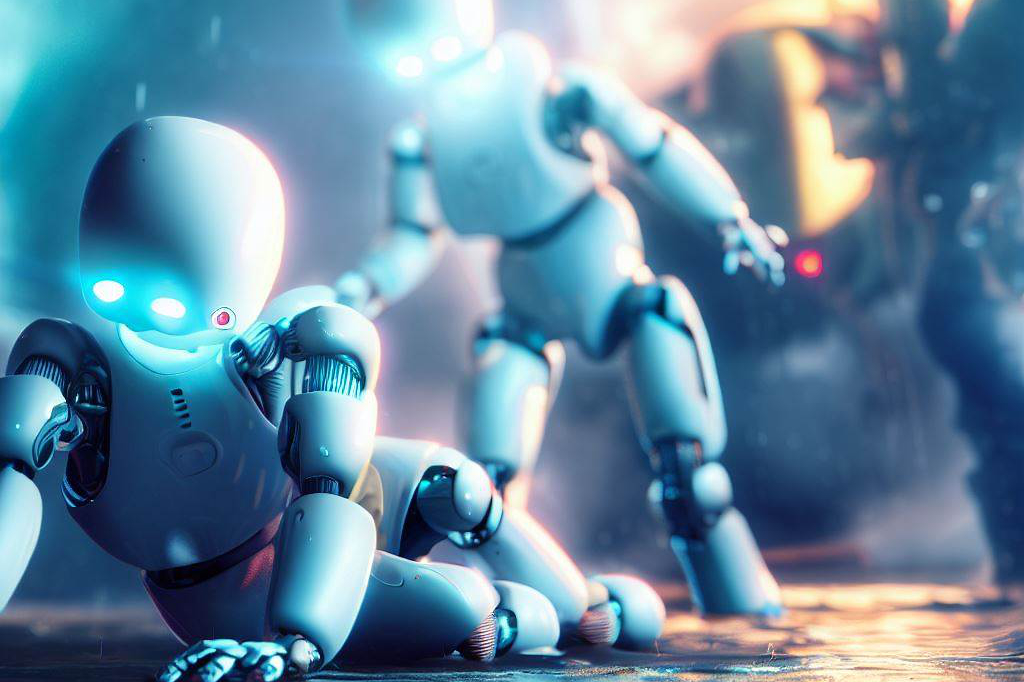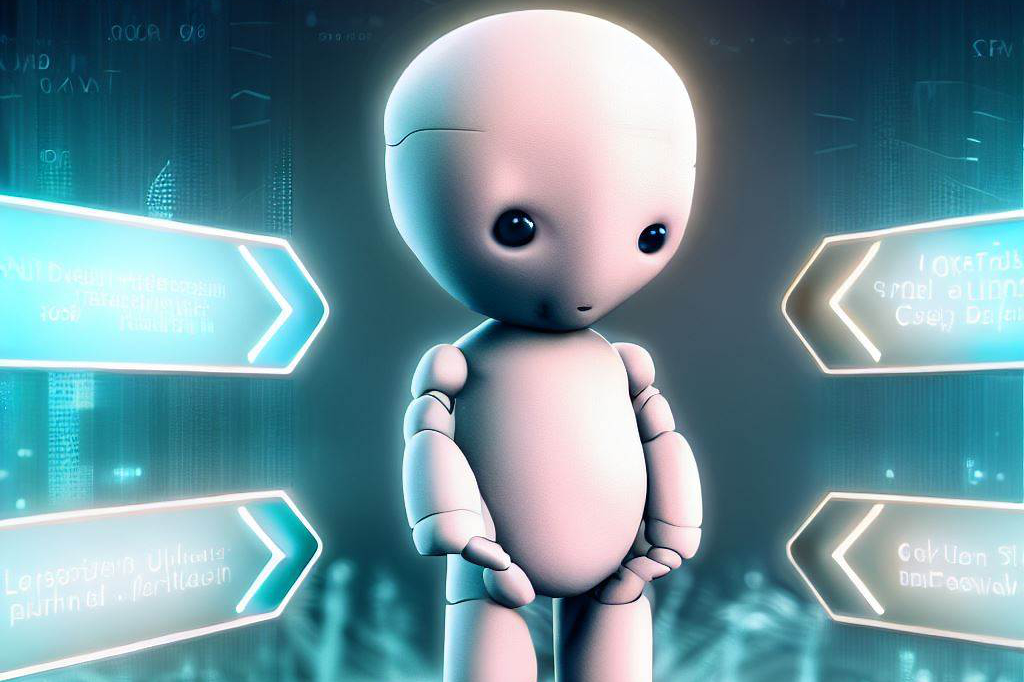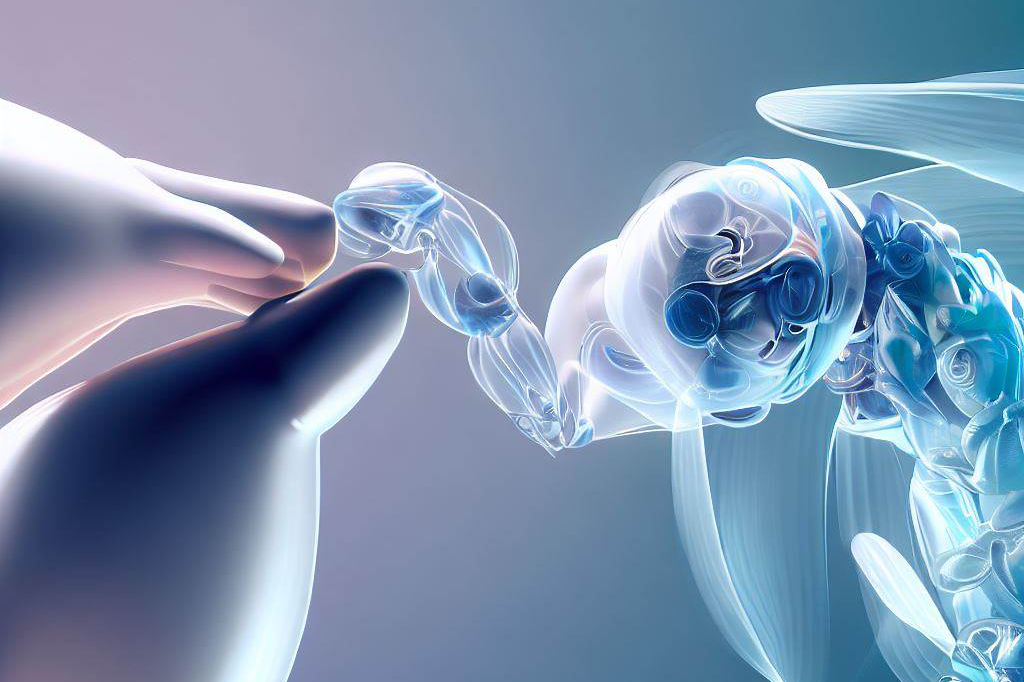The Rise of Soft Robotics: Flexible, Adaptable, and Biomimetic Machines
Defining Soft Robotics
Soft robotics is a relatively new field that aims to create machines with soft and flexible bodies. The term “soft” refers to the use of compliant materials such as silicone, rubber, and other polymers, which allow for more natural movements compared to rigid machines. The aim is to create robots that can adapt easily to changing environments and work alongside humans in a safer manner.
There are several key characteristics that define soft robotics.
Firstly, they are made from materials that are highly flexible and stretchable, allowing them to deform in response to external forces or changes in their environment.
Secondly, they often rely on air pressure or hydraulic systems rather than conventional motors and gears for actuation.
These robots may take inspiration from biological organisms such as octopuses or worms to achieve their functions.
A Brief History of Soft Robotics
Soft robotics emerged as a research area in the early 2000s when researchers began exploring new ways of building robots with flexible materials. One major milestone was the development of the OctArm by George M. Whitesides at Harvard University in 2005.
This soft robot was inspired by an octopus arm and could perform tasks such as grasping objects. Since then, there have been numerous advancements in soft robotics technology driven by academic research labs around the world as well as private companies seeking new solutions for robotics applications.
The Importance of Soft Robotics in Modern Technology

Soft robotics has become increasingly important due to its potential applications across various industries, including
- healthcare,
- manufacturing,
- agriculture
- and search & rescue operations among others.
These robots can be programmed to perform intricate tasks or interact with delicate substances without damaging them.
Furthermore, soft robotic technology offers significant advantages over traditional rigid-body systems, such as increased safety due to their ability to deform without causing injury to humans or other sensitive materials. Soft robotics can also provide more natural movements in robotic prosthetics, making them easier and more comfortable to use.
Soft robotics is a rapidly growing field with exciting potential for the development of adaptable and biomimetic machines. It offers numerous advantages over traditional rigid-body robotics systems and has the potential to revolutionize industries from healthcare to agriculture.
Advantages of Soft Robotics

Soft robotics has become an essential subfield in robotics research, due to its numerous advantages over traditional rigid robots. The ability of soft robots to deform and adapt to their environment makes them ideal for use in settings that require a high level of flexibility and dexterity. In this section, we will explore some of the key advantages of soft robotics technology.
Flexibility and Adaptability
One major advantage of soft robots is their inherent flexibility and adaptability, which allow for a wide range of motions. Unlike traditional rigid robots, which are limited in their movements by their hard structures, soft robots can bend, stretch, and twist around obstacles. This makes them particularly useful in environments where space is limited or where multiple objects need to be manipulated at once.
For example, soft robotic grippers can be designed with varying degrees of stiffness or elasticity to enable them to conform to complex shapes without damaging the objects they are handling. Similarly, soft robotic arms can flex and curl around obstacles or workpieces with greater ease than their rigid counterparts.
Safety
Another significant advantage of soft robotics is safety. Traditional industrial robots are powerful machines that can cause serious injury if they come into contact with humans or other delicate objects. In contrast, because of their flexible nature and low stiffness, soft robots pose less risk during interactions with humans.
Soft robot technology has already found widespread use in the medical field, where physicians use these devices for surgical procedures where precision is required, such as micro-needle insertion or endoscopic interventions inside the body cavities. Additionally, they have been used as prosthetic limbs for amputees, providing better grip than ever before while reducing the chances of accidents due to overexertion.
Biomimicry
Nature has always inspired scientists to design new technologies that mimic biological systems, given their extraordinary complexity and efficiency. The idea of mimicking biological organisms to create robots has resulted in the birth of soft robotics.
Soft robotics is a field that is inspired by nature and seeks to replicate organic movements and structures. This concept, known as biomimicry, allows for the creation of robots that are more adaptable and efficient than those designed solely based on human engineering.
For example, many researchers have focused on creating soft robotic systems that mimic the movement and behavior of animals such as octopuses or jellyfish, which are renowned for their extraordinary flexibility and adaptability. These designs can be used for underwater exploration or advancement in rescue operations where traditional rigid robots cannot reach.
Overall, flexibility, adaptability, safety, and biomimicry are some key advantages that make soft robotics appealing to many different fields, from medical procedures to manufacturing industries. In the next section, we will discuss some applications where these benefits are being utilized.
Applications of Soft Robotics

The Medical Field: A New Way to Provide Care
Soft robotics has revolutionized the medical industry and opened up new possibilities for healthcare providers. One significant application is in surgery, where soft robots can provide minimally invasive procedures that are less risky and require a shorter recovery time. Soft robots have been used, for example, in cardiac surgeries, where they can navigate through the body’s arteries with ease and precision to perform delicate surgical procedures.
Other applications include rehabilitation tools such as exoskeletons, which allow patients with mobility impairments to regain their independence by assisting them with walking.
Another advantage of soft robotics in the medical field is that it allows for more natural interactions between patients and machines.
For example, a robotic arm made of soft materials can be used to help people with disabilities eat or drink independently while still providing the necessary support.
In addition, other devices, such as prosthetics or assistive devices, can mimic human motion more accurately.
The Manufacturing Industry: Streamlining Workflows
The manufacturing industry has also seen an enormous impact from soft robotics technology. Traditional industrial robots are bulky and often require safety cages around them because of their rigid structure – a barrier that slows down production processes. Soft robots provide a solution that allows machines to work alongside humans without causing any harm.
One specific application involves pick-and-place tasks where flexible grippers made from soft materials can handle delicate objects like fruit or eggs without damaging them while being able to adapt easily to different shapes and sizes. This innovation improves productivity by reducing human labor requirements while increasing accuracy rates.
Search and Rescue Operations: Saving Lives
Soft robotics technology has provided a unique advantage in search-and-rescue operations after natural disasters like earthquakes or hurricanes when traditional machinery cannot access tight spaces or unstable structures safely.
A team from the Harvard John A. Paulson School of Engineering and Applied Sciences designed a soft robot called the “Octobot” inspired by the anatomy of an octopus that can move through tight spaces, and even swim, without damaging fragile structures or causing harm to anyone caught in the debris.
This application has proven to be a significant improvement in disaster relief efforts, as the Octobot’s ability to adapt to different situations makes it a very versatile machine. Soft robotics is transforming many industries and increasing efficiency while improving safety standards.
Its flexible nature allows for more natural interactions between humans and machines while also providing solutions for tasks that were previously impossible with traditional, rigid machines. The future of soft robotics technology is just beginning, and we can expect it to create even further breakthroughs across various fields.
Types of Soft Robots

Pneumatic-based Soft Robots
Pneumatic-based soft robots use air pressure to achieve movements and motions. These robots are made up of flexible materials such as silicon and rubber, which are inflated with compressed air to create movement.
Pneumatic-based soft robots have the advantage of being able to change shape and size easily, making them perfect for tasks that require unique movements or adaptability. They are used in medical devices such as prosthetics, where the ability to conform to body shapes is important.
Hydraulic-based Soft Robots
Hydraulic-based soft robots utilize a fluid-filled system that is pumped in and out of chambers within the robot’s body. This fluid transmits pressure throughout the robot’s structure, which causes it to move or change shape.
These types of robots have high strength-to-weight ratios and can produce powerful forces while being relatively lightweight compared to traditional robots. They are commonly used in manufacturing processes that require precision movements, as well as for exploration in underwater environments.
Electroactive Polymer-Based Soft Robots
Electroactive polymer (EAP)-based soft robots utilize materials that change shape when exposed to an electrical charge. EAPs can be made out of a variety of materials, including silicone and polymers.
Due to their high flexibility and sensitivity to small amounts of electricity, EAPs are ideal for creating robotic devices that mimic human muscle movements. These types of soft robots can be used for medical applications such as prosthetics or assistive devices.
Challenges and Future Directions in Soft Robotics

Power Source and Energy Efficiency Challenges
One challenge facing soft robotics is finding an efficient power source that does not add too much weight or bulkiness to the robot’s structure. Traditional batteries may not be suitable due to their weight and low power density. Researchers are exploring alternative solutions, such as using fuel cells or harvesting energy from the environment through methods such as vibration and heat.
Control Challenges
Another challenge in soft robotics is control. Unlike traditional robots, soft robots have a high degree of flexibility and adaptability, which makes controlling their movements more difficult.
Soft robots may also be sensitive to external factors, such as temperature changes or humidity levels. Researchers are working on developing better algorithms and control systems to improve the precision of soft robot movements.
Integration with Other Technologies
Integrating soft robotics with other technologies can lead to breakthroughs in fields such as medicine and manufacturing. For example, combining soft robotic prosthetics with virtual reality technology could help patients regain their sense of touch or improve motor function. Researchers are also exploring how soft robotics can be integrated into existing technologies to improve efficiency and safety in manufacturing processes.
Final Thoughts

Soft robotics is a promising field that has the potential to revolutionize industries such as medicine and manufacturing. The flexibility, adaptability, and biomimetic nature of these machines make them ideal for a variety of applications.
However, there are still challenges that must be overcome before these robots become widely adopted. As researchers continue to develop innovative solutions for issues such as power sources and control systems, we can expect even greater advancements in the field of soft robotics in the future.

C M, a seasoned editor, journalist, and consultant, is deeply fascinated by the convergence of technology, space, and the future of humanity.
With a particular interest in transhumanism, futurology, and the philosophical and ethical dimensions of these domains, C M serves as the lead contributor to TranscendSphere and SpaceSpotlight.
When not penning insightful articles on these rapidly evolving fields, C M indulges in their love for podcasts and books, proudly embracing their status as a ‘Happy Nerd Extraordinaire!’





